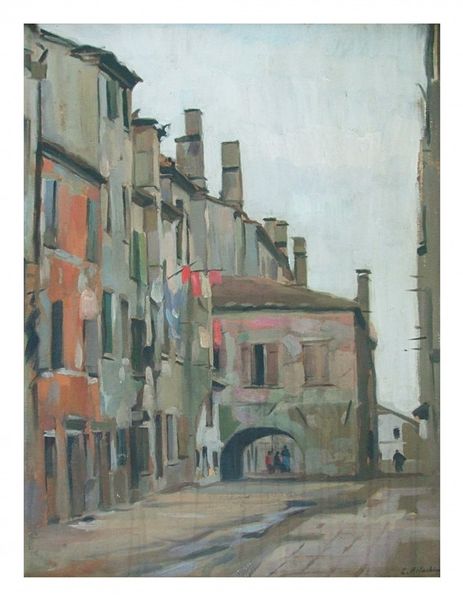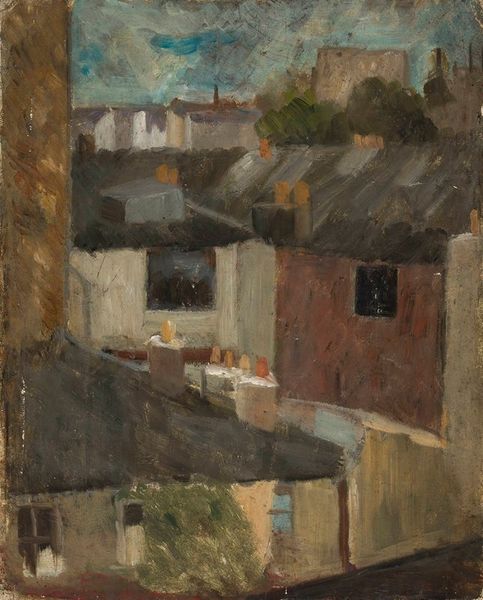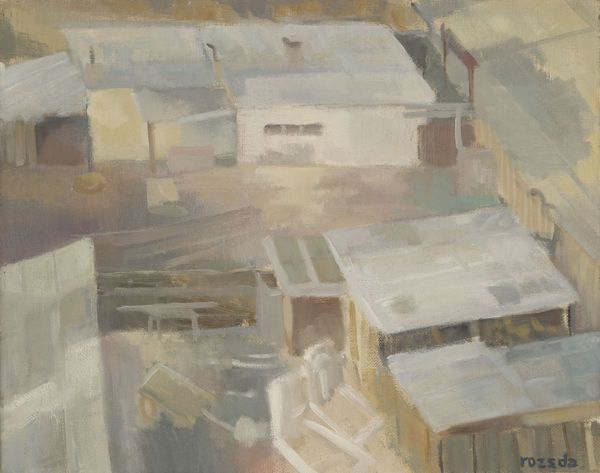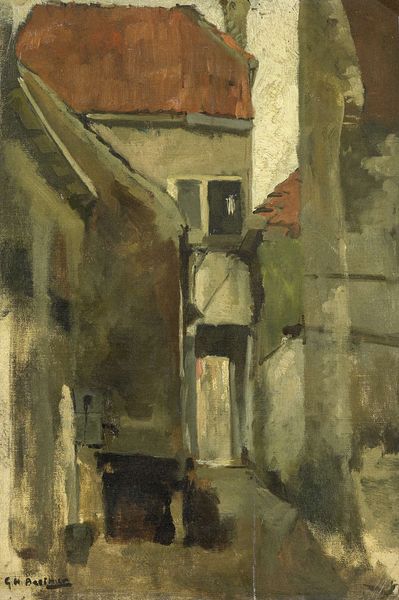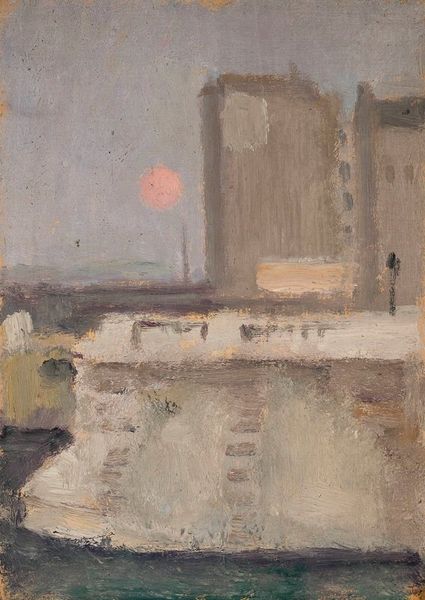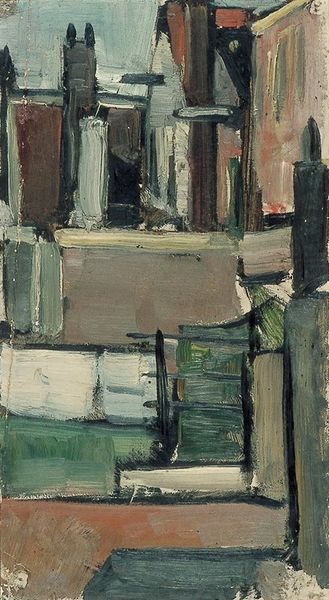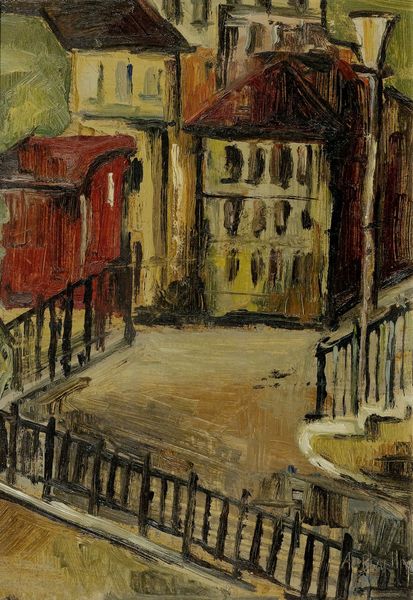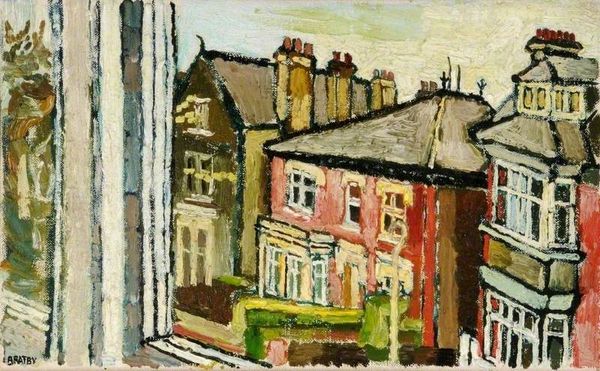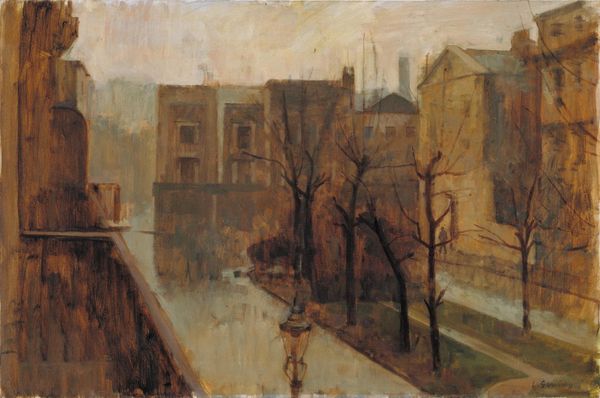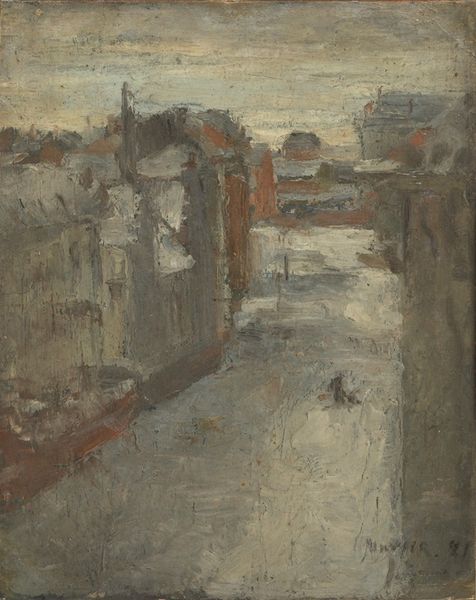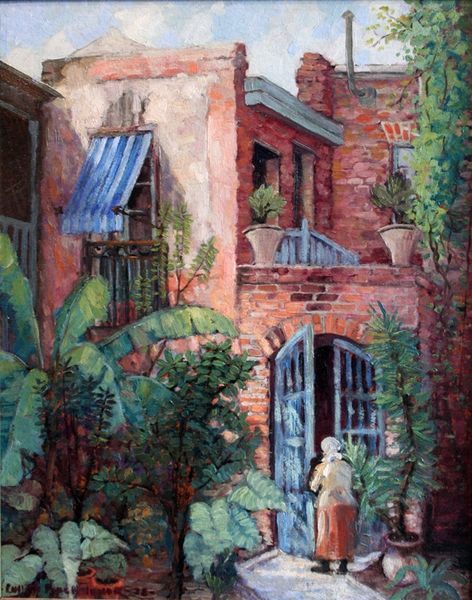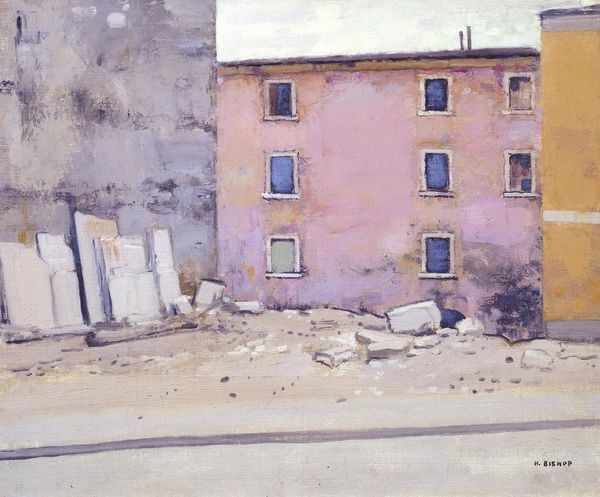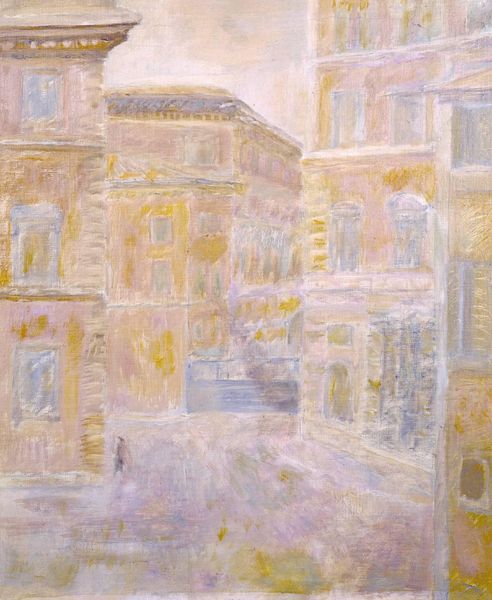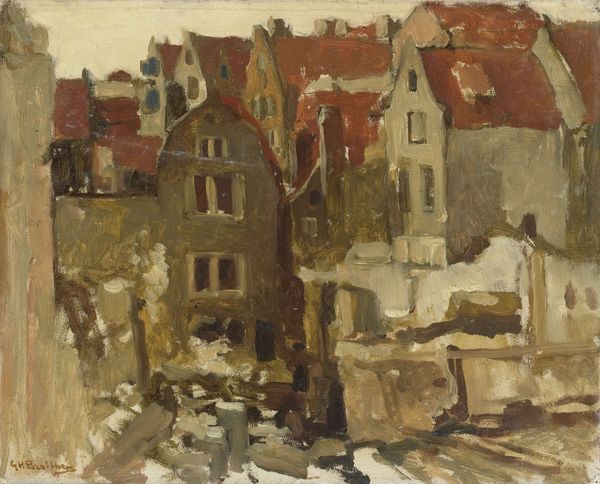
Dimensions: support: 2438 x 1727 mm
Copyright: © Anthony Eyton. All Rights Reserved 2010 / Bridgeman Art Library | CC-BY-NC-ND 4.0 DEED, Photo: Tate
Editor: This is Anthony Eyton's "Open Window, Spitalfields," a large-scale painting housed at the Tate. The raw, almost crude application of paint really strikes me. What can you tell me about the artist's process here? Curator: Notice how Eyton emphasizes the materiality of paint itself, almost as a sculptural element. It's about the physical act of applying pigment to canvas, blurring the distinction between the representation of the window and the tangible reality of the painting's surface. Editor: So, it's less about depicting a scene and more about the inherent qualities of the medium? Curator: Exactly. The social context of Spitalfields, a historically working-class area, informs the painting’s rough-hewn aesthetic, seemingly elevating everyday labor and materials to the realm of high art. Editor: I hadn't considered that. It really reframes my understanding of the painting. Thanks! Curator: My pleasure. Paying attention to process and context always enriches the viewing experience.
Comments
tate 8 months ago
⋮
http://www.tate.org.uk/art/artworks/eyton-open-window-spitalfields-t03339
Join the conversation
Join millions of artists and users on Artera today and experience the ultimate creative platform.
tate 8 months ago
⋮
This painting shows the view from the artist's studio in an eighteenth century house in east London. Eyton made a number of paintings of the view seen here, which includes a derelict house and a synagogue. This painting was worked on over a period of five years, during which time the view inevitably changed as houses were refurbished. Eyton chose a large canvas because he wanted to express the immediacy of the scene. 'All the time I wanted it to be a true record about the houses opposite and what they looked like seen from one spot, in a particular grey light'. The frontality of the composition was influenced by his love of Italian Renaissance painting. Gallery label, September 2004
